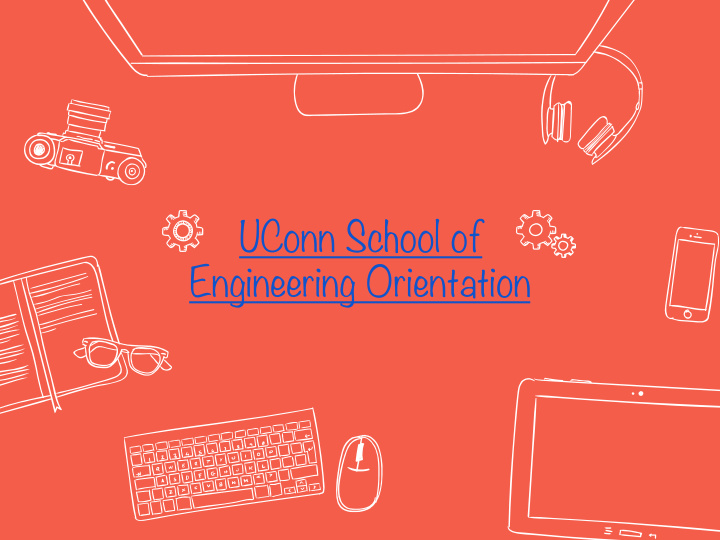



UConn School of Engineering Orientation
Presentation Learning Objectives ✖ The advisor’s role in developing self-advocacy for first year students as they transition to college. ✖ How to engage in an orientation and advising model that promotes student self-advocacy. ✖ Specific advising strategies to develop self- advocacy and agency for first year students.
Millenial students! ✖ Tech-savvy ✖ Feeling of “specialness” ✖ Pressure to be high achievers ✖ Dealing with “helicopter parents” ✖ Lack of resilience (Howe & Strauss 2003) & (Gray 2015)
Professional Advising in the School of Engineering is… Relatively new Based on a 2 + 2 model + Decentralized
Additional Components to Orientation ✖ Day One: Day One: ✖ Large group presentation ✖ Ice-breakers! ✖ One-on-one advising ✖ First Year Planning Guide ✖ Media scavenger hunt ✖ Day Two: Day Two: ✖ Small group registration ✖ Navigating Student Admin tools ✖ Recommendations for pre-college prep ✖ Farewell and stay in touch!
Continuing to promote self-advocacy through advising
Advising Strategies ✖ Mandatory advising ✖ Recurring probation advising ✖ Give tools, not answers ✖ Ask questions about action plans ✖ Help set goals ✖ Curtail complaining ✖ Emphasize responsibility ✖ Give advising “homework” ✖ Challenge and support (Sanford 1962)
Challenges ✖ No data yet, just observations ✖ Minimal department involvement ✖ Time consuming for advising team ✖ Minimal one-on-one time with students at orientation to discuss college transition ✖ Potentially limited interactions with students, especially those that need most support
How might pieces of this orientation and advising model work on your campus?
Thanks! Any questions?
Recommend
More recommend